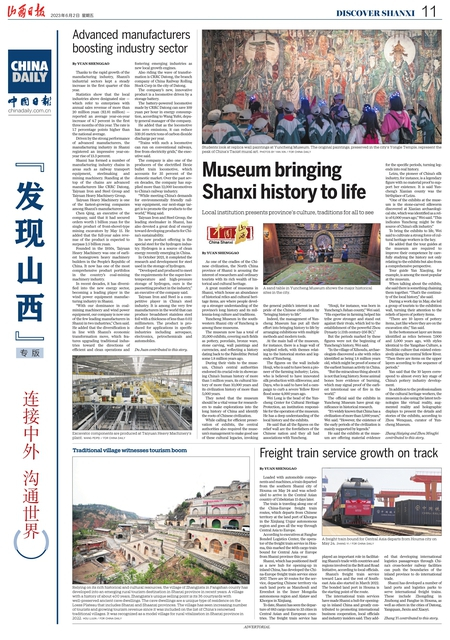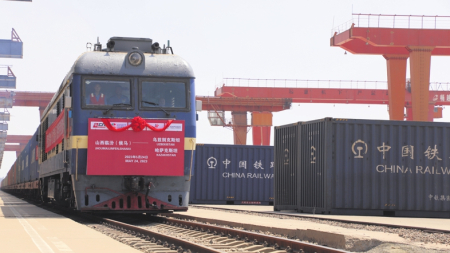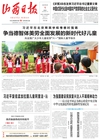Freight train service growth on track
Loaded with automobile components and machines, a train departed from the southern Shanxi city of Houma on May 24 and was scheduled to arrive in the Central Asian country of Uzbekistan 15 days later.
The train is traveling along one of the China-Europe freight train routes, which departs from Chinese territory at the land port of Khorgos in the Xinjiang Uygur autonomous region and goes all the way through Central Asia to Europe.
According to executives at Fanglue Bonded Logistics Center, the operator of the freight train service in Houma, this marked the 46th cargo train bound for Central Asia or Europe from Shanxi province this year.
Shanxi, which has positioned itself as a new hub for opening-up in inland China, has developed the China-Europe freight train service since 2017. There are 10 routes for the service, departing Chinese territory via such land ports as Manzhouli and Ereenhot in the Inner Mongolia autonomous region and Alataw and Khorgos in Xinjiang.
To date, Shanxi has seen the departure of 683 cargo trains to 33 cities in Central Asian and European countries. The freight train service has played an important role in facilitating Shanxi's trade with countries and regions involved in the Belt and Road Initiative, according to local officials.
Shanxi's freight train service toward Laos and the rest of Southeast Asia also started in March 2022.The bonded land port in Houma is the starting point of the route.
The international train services have made Shanxi a hub for opening-up in inland China and greatly contributed to promoting international business cooperation, local officials and industry insiders said. They added that developing international logistics passageways through China's cross-border railway facilities can push the boundaries of the inland province to do international trade.
Shanxi has developed a number of land ports and logistics parks to serve international freight trains. These include Zhongding in Jinzhong and Fanglue in Houma, as well as others in the cities of Datong, Yangquan, Jiexiu and Xiaoyi.
By Yuan Shenggao
Zhang Yi contributed to this story.












